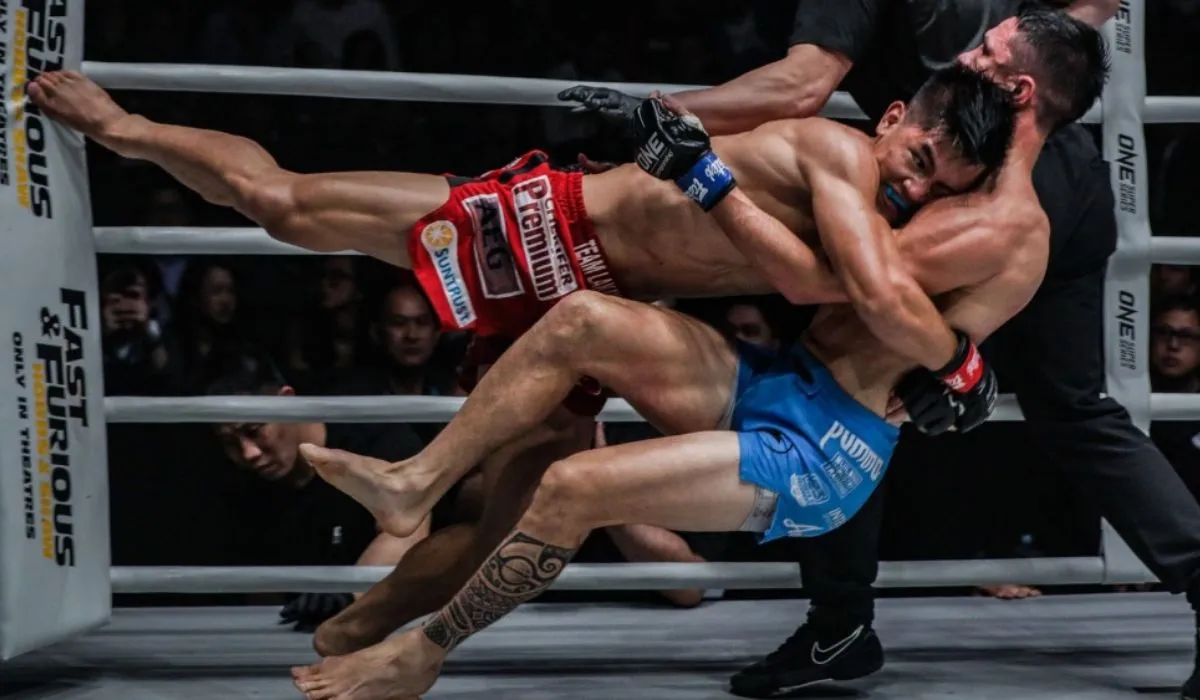![Hex Bar / Trap Bar – A Complete Guide [2022]](https://seoandmma.files.wordpress.com/2022/10/hexbardeadlift.gif)
Rather confusingly, known by two names:
- Hex Bar
- Trap Bar
The erm, hex/trap bar is a controversial bit of kit.
Pros of the Hex Bar
- Easier to learn key exercises like the deadlift
- Better for beginners
- Less pinch on the discs in the lower back/spine
- Hex bar deadlift often resembles increasingly of a squat with less lower when recruitment
- Beginners can progress quicker
- Beginners can lift increasingly weight which motivates them (good for PTs etc)
- The neutral grip is easier for most & puts less stress on the wrists
- Hex bar deadlifts are largest for those with lower when pain
- Greater peak power & velocity (see 2011 study here)
- No banging your shins on the bar
- May develop quads increasingly powerfully than barbell deadlifts
Cons of the Hex Bar
- Shorter range of motion
- Less bicep and when muscles activation/used
- Less cadre engagement
- Less functional – you normally pick up objects etc in front of you
- Less posterior uniting engagement – less minutiae of glutes, hamstrings and back
- Limited when wile – harder to train with a increasingly horizontal when angle
- Difficult to reproduce the word-for-word same technique on variegated training days*
*more info in the video below:
How much do trap bars weigh?
Unlike Olympic barbells, trap bars vary in weight equal to the manufacturer. Trap bars weigh between20kg and 30kg (44lbs – 66lbs.
How much does a hex bar weigh kg?
Trap bars often weigh between 20kg and 30kg.
Hex Bar Exercises
Hex bars are pretty versatile. Unelevated are some of the increasingly popular exercises that you can perform with a hex/trap bar.
Exercise at your own risk
Hex Bar Deadlift

Hex Bar Deadlift Form
- Stand directly in the centre of the hex bar/trap bar (or whatever you want to undeniability it!)
- Stand with your feet shoulder-width apart
- Keep your shoulders whilom your hips and neck & throne in a neutral position looking forwards
- Keep looking forwards/ahead and wrench your knees
- Grip the handles
- Pre-tense your shoulders, hips and expressly your cadre with a large inhale of air
- “Take the weight off the bar” by lifting taking “some of the weight off the bar” by extending your legs very slightly whilst maintaining a straight when and looking ahead
- Keep a neutral spine and lift the bar by extending your legs (keep your stovepipe straight at all times)
- Extend your legs (don’t lock your knees fully, or at speed) and squeeze your glutes at the top of the movement
- Lower the bar under tenancy by limp your legs and “hinging” at your hips – alimony looking ahead
Split Stance Trap Bar Deadlift
Providing some of the uni-lateral loading benefits of single-leg RDLs, the split stance deadlift is popular with athletes.
- Place one foot in front of the other
- Load the front foot with your soul weight by standing on the wittiness of your foot with the rear foot:

Trap Bar RDL (Romanian Deadlifts)
- Similar to a standard deadlift but the knees only wrench 10 – 15 degrees
- Emphasis is put on the downward, eccentric phase
- Focus is on the hip/hinge pattern of movement

Banded Trap Bar Deadlift
Great for ascending strength and power minutiae (or if you just don’t have unbearable weight plates), trap bar deadlifts with bands are popular with athletes.
- Wrap the ends of the wreath virtually the barbell collars at each end
- Stand on the wreath with the middle of your feet/sole of your feet

Trap Bar Overhead Press
The overhead press, is a unconfined exercise for shoulder minutiae and cadre strength. Using a trap bar to perform the overhead printing enables you to perform the exercise with a neutral grip (generally largest for your wrists).
Set the trap bar up in a rack, just unelevated shoulder height.
Stand underneath the bar
Make sure to grip the bar in the centre – not too far when or too far forwards or the bar will be tricky to balance
Brace your cadre and lift the bar up and into position to perform presses.
Try and alimony your elbows in, rather than flaring them outwards when pressing
Be mindful of the wastefulness of the bar – it can tilt forwards or backwards very hands and fall.
Trap Bar Jumps
A unconfined exercise for towers explosive power, trap bar jumps are substantially a deadlift with a jump.
Trap bar jumps, are much easier to learn than other Olympic-style lifts such as cleans and snatches.
Start with a light weight, do sets of two or three, to uncork with, focussing on technique.
Do the exercise with speed – you don’t want to be stressed or tired, as the technique will goof and you’ll be training endurance, not power.
Keep the weight unelevated 50% of your max hex bar deadlift.
Press through your heels, lift the weight up a few inches, and then explode up into a jump.
Trap Bar Shrugs
Stand in the middle of the bar
Grip the handles and ‘deadlift’ the bar up into the starting/ standing position for shrugs
Keep your stovepipe straight and in a controlled movement, move your shoulders upwards as much as possible
Squeeze your traps for a second or two at the top of the movement, then lower it when lanugo by lowering your shoulders
Other Hex Bar FAQS
What’s with the 20 rep trap bar deadlift?
20 reps deadlifts and squats have been used by bodybuilders for years to build muscle and really tax the soul (and the CNS) with a recipe movement for upper reps. 20 rep trap bar deadlifts have wilt a rencontre on Reddit. Unconfined for all-round fitness and strength, be shielding in terms of technique and overtraining. If your technique begins to fail, you could well injure your back.
What’s a half hex bar?
Half hex bars are open-ended trap/hex bars. With a half hex bar you can moreover perform exercises such as lunges.
What muscles do hex bar deadlifts work?
What muscles don’t hex bar deadlifts work!?
The main muscles used when performing a hex bar deadlift include:
- Traps
- Lats
- Spinal erectors
- Glutes
- Hamstrings
- Quads
Further info

![Cricket Gym Training Programme · .pdf · [2022]](https://seoandmma.files.wordpress.com/2018/09/worldsgreatest.jpg)








